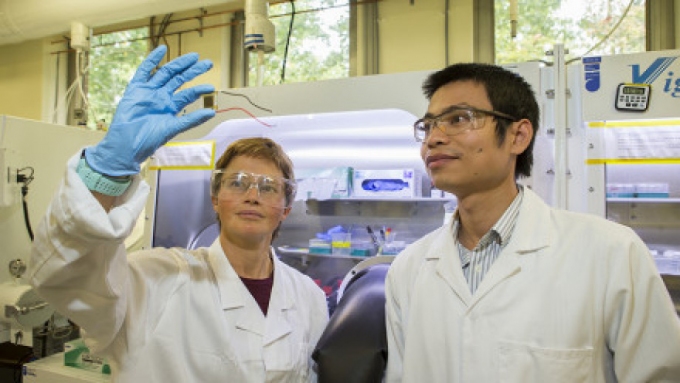ANU has won $7.7 million in the latest round of the Australian Renewable Energy Agency (ARENA) funding to help solve the world’s challenges in energy security and climate change.
ANU will lead six ARENA-funded projects and will play an important role in six others.
ANU Vice-Chancellor Professor Brian Schmidt AC said the ARENA funding announcement demonstrated that ANU was at the leading edge in renewable energy research.
“The work that our engineers are doing in renewable energy is truly outstanding, and the funding from ARENA will help them to continue their excellent research,” Professor Schmidt said.
“On behalf of the University, I congratulate the grant recipients and I’m really looking forward to seeing the exciting results in the years to come.”
ANU Research School of Electrical, Energy and Materials Engineering researchers Professor Kylie Catchpole, Professor Andres Cuevas, Professor Dan Macdonald, Professor Andrew Blakers and Dr Kean Chern Fong will be lead chief investigators on the six ANU-led projects.
Professor Macdonald’s team will receive $2.4 million to research key sources of power loss in silicon photovoltaic (PV) technology, and it will span the entire production chain.
“New methods for detecting and eliminating defects and losses will be developed and then applied in industry, leading to more efficient and reliable PV modules,” he said.
“This joint project between ANU and the University of New South Wales also involves world-leading institutes and companies such as Jinko Solar in China, the Fraunhofer Institute for Solar Energy Research in Germany, the National Renewable Energy Laboratory in the US, and BT Imaging in Australia.”
Dr Fong’s team has been awarded nearly $2 million to develop next-generation bifacial silicon solar cells in partnership with companies GCL Technology Systems in China and Wavelabs Solar in Germany.
Bifacial solar cells absorb light from both front and rear surfaces, taking advantage of light reflected from the ground or rooftop surfaces.
“The concept has proven to yield 30 per cent higher annual power output, while being potentially cheap to manufacture,” Dr Fong said.
“This project aims to bring state-of-the-art technology developed at ANU to industry with a pilot within three years.”
Professor Catchpole and her colleagues received a total of $1.6 million for two projects on perovskite solar cells.
“These projects will help us reduce the cost of solar cells by reaching efficiencies that haven’t been possible previously and by developing stable low-cost electrodes for perovskite cells,” Professor Catchpole said.
ARENA awarded $1.1 million to Professor Cuevas and colleagues to improve the performance of silicon solar cells, which are already inexpensive to make.
“The project funding will enable us to design new technology that will facilitate the transition of the silicon PV industry to a new generation of low-cost, high-efficiency silicon solar cells,” Professor Cuevas said.
Professor Blakers’ team won $788,515 to find ways of producing a highly efficient and stable PV material more cost-effectively.
“I’m very happy that this project will be funded, as there is a real possibility to develop an affordable and very efficient PV system.”
For general media enquiries, contact Will Wright from the ANU Media Team on +61 2 6125 7979, +61 478 337 740 or at media@anu.edu.au

